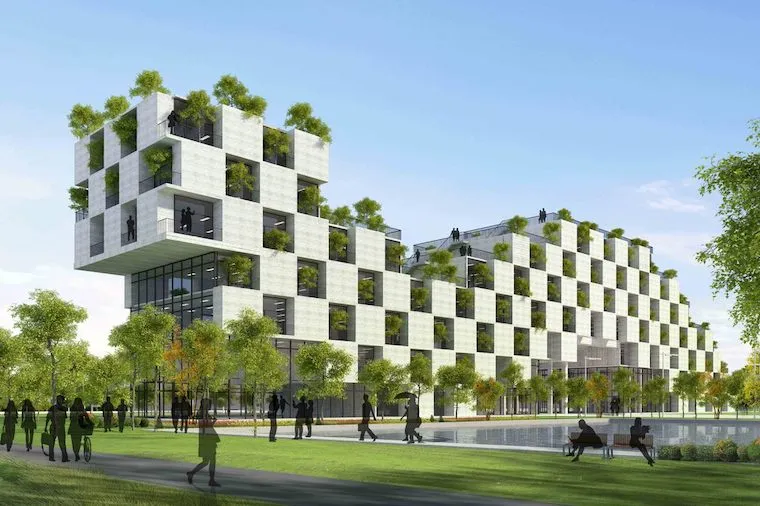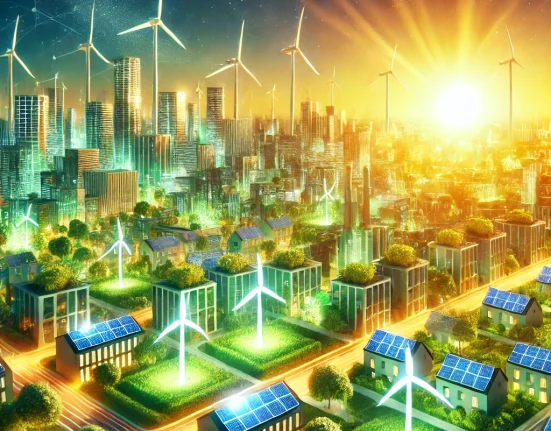High-performance buildings are structures designed and constructed to achieve superior levels of energy efficiency, environmental sustainability, occupant comfort, and overall performance compared to standard buildings.
These buildings incorporate various strategies and technologies to optimize energy consumption, reduce environmental impact, and enhance the well-being of occupants; and by offering numerous benefits, including reduced energy costs, improved occupant productivity and well-being, and decreased environmental impact, as well as incorporating sustainable design principles, advanced technologies, and efficient systems, these buildings pave the way for a more sustainable and environmentally conscious future.
Introduction:
High-performance buildings are structures designed and constructed to achieve superior levels of energy efficiency, environmental sustainability, occupant comfort, and overall performance compared to standard buildings. These buildings incorporate various strategies and technologies to optimize energy consumption, reduce environmental impact, and enhance the well-being of occupants—by offering numerous benefits, including reduced energy costs, improved occupant productivity and well-being, and decreased environmental impact; and by incorporating sustainable design principles, advanced technologies, and efficient systems, these buildings pave the way for a more sustainable and environmentally conscious future.
In an era marked by increasing environmental concerns and a growing focus on energy efficiency, high-performance buildings have emerged as beacons of sustainable construction and innovative design. These remarkable structures have redefined traditional building practices, prioritizing energy efficiency, occupant comfort, and environmental stewardship. By embracing cutting-edge technologies, sustainable materials, and forward-thinking design principles, high-performance buildings are transforming the way we think about the built environment. Let’s delve into the world of high-performance buildings and explore their key features, benefits, and the path they chart towards a greener and more sustainable future.
Energy Efficiency as the Cornerstone:
At the heart of every high-performance building lies a commitment to energy efficiency. These buildings employ a multitude of strategies to minimize energy consumption and optimize performance. From advanced insulation materials to energy-efficient lighting systems and HVAC solutions, every aspect is meticulously designed to reduce energy demand. Passive design techniques, such as strategic orientation for optimal sunlight exposure and natural ventilation, are also utilized to harness the power of nature and further enhance energy efficiency.
Harnessing Renewable Energy:
Beyond energy efficiency, high-performance buildings go the extra mile by incorporating renewable energy sources. Solar panels, wind turbines, and geothermal systems are frequently integrated into the building’s design, transforming them into self-sufficient power generators. This clean energy not only reduces reliance on traditional power grids but also curbs greenhouse gas emissions, making high-performance buildings significant contributors to combating climate change.
Water Conservation and Indoor Comfort:
High-performance buildings not only excel in energy efficiency but also in water conservation and indoor environmental quality. Water-efficient plumbing fixtures, rainwater harvesting systems, and graywater recycling ensure responsible water usage. Moreover, emphasis is placed on providing occupants with exceptional comfort and well-being. Optimal indoor air quality, natural daylighting, temperature control, and acoustics are all carefully considered to create healthy and productive indoor environments.
Sustainable Materials and Life Cycle Assessment:
The use of sustainable materials is a hallmark of high-performance buildings. These structures employ eco-friendly materials, such as locally sourced or recycled content, to minimize their environmental impact. Furthermore, life cycle assessment (LCA) plays a vital role in evaluating the overall sustainability of a building. By considering factors such as energy consumption, material usage, and waste generation from construction to decommissioning, high-performance buildings aim to minimize their ecological footprint throughout their entire life cycle.
The Role of Smart Technology:
High-performance buildings are not limited to physical design elements alone. They incorporate smart building technologies to optimize operational efficiency and enhance occupant comfort. Automation and control systems enable remote monitoring and control of building systems, facilitating real-time data analysis for efficient energy management. Smart sensors, meters, and building management systems work in tandem to reduce energy waste and improve overall performance.
Certification Programs and Beyond:
Several certification programs, including LEED, BREEAM, and WELL Building Standard, serve as benchmarks for high-performance buildings. These programs provide guidelines and standards for sustainability, energy efficiency, indoor air quality, and occupant comfort. By meeting these rigorous criteria, high-performance buildings gain recognition for their commitment to excellence and serve as inspiration for future sustainable construction projects.
Conclusion:
High-performance buildings are leading the way towards a sustainable and environmentally conscious future. By embracing energy efficiency, renewable energy sources, water conservation, and indoor comfort, these structures redefine the possibilities of the built environment. With their utilization of sustainable materials, incorporation of smart technology, and adherence to rigorous certification programs, high-performance buildings demonstrate the potential for harmonizing human comfort, environmental responsibility, and architectural innovation. As we continue to strive for a greener future, high-performance buildings illuminate a path towards sustainable development that benefits both occupants and the planet.
Read More: 3 Key Challenges to Energy Transition











Leave feedback about this